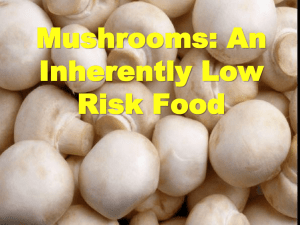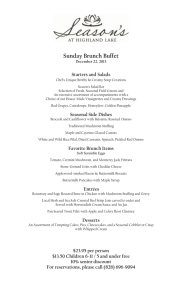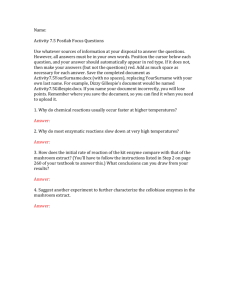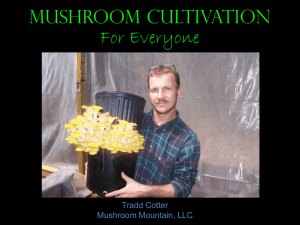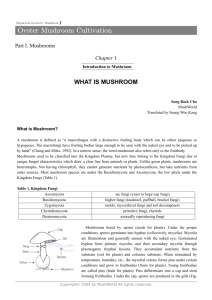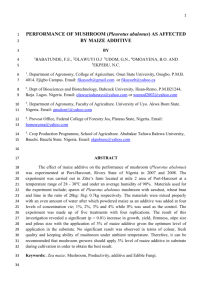MUSHROOM COMPOST
advertisement
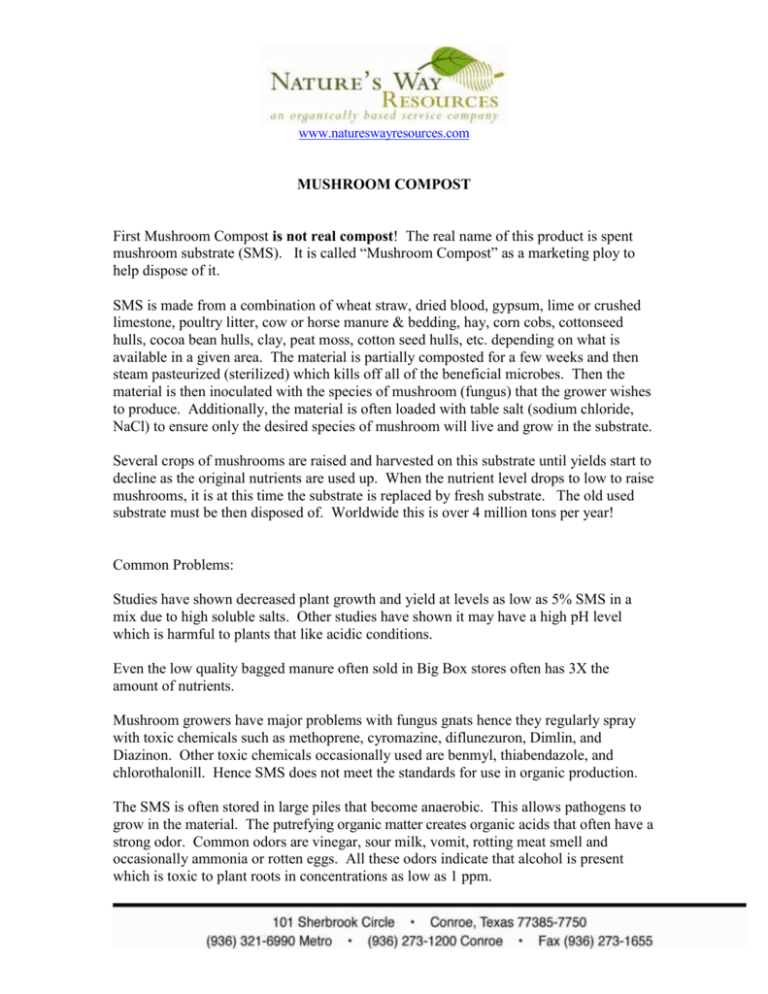
www.natureswayresources.com MUSHROOM COMPOST First Mushroom Compost is not real compost! The real name of this product is spent mushroom substrate (SMS). It is called “Mushroom Compost” as a marketing ploy to help dispose of it. SMS is made from a combination of wheat straw, dried blood, gypsum, lime or crushed limestone, poultry litter, cow or horse manure & bedding, hay, corn cobs, cottonseed hulls, cocoa bean hulls, clay, peat moss, cotton seed hulls, etc. depending on what is available in a given area. The material is partially composted for a few weeks and then steam pasteurized (sterilized) which kills off all of the beneficial microbes. Then the material is then inoculated with the species of mushroom (fungus) that the grower wishes to produce. Additionally, the material is often loaded with table salt (sodium chloride, NaCl) to ensure only the desired species of mushroom will live and grow in the substrate. Several crops of mushrooms are raised and harvested on this substrate until yields start to decline as the original nutrients are used up. When the nutrient level drops to low to raise mushrooms, it is at this time the substrate is replaced by fresh substrate. The old used substrate must be then disposed of. Worldwide this is over 4 million tons per year! Common Problems: Studies have shown decreased plant growth and yield at levels as low as 5% SMS in a mix due to high soluble salts. Other studies have shown it may have a high pH level which is harmful to plants that like acidic conditions. Even the low quality bagged manure often sold in Big Box stores often has 3X the amount of nutrients. Mushroom growers have major problems with fungus gnats hence they regularly spray with toxic chemicals such as methoprene, cyromazine, diflunezuron, Dimlin, and Diazinon. Other toxic chemicals occasionally used are benmyl, thiabendazole, and chlorothalonill. Hence SMS does not meet the standards for use in organic production. The SMS is often stored in large piles that become anaerobic. This allows pathogens to grow in the material. The putrefying organic matter creates organic acids that often have a strong odor. Common odors are vinegar, sour milk, vomit, rotting meat smell and occasionally ammonia or rotten eggs. All these odors indicate that alcohol is present which is toxic to plant roots in concentrations as low as 1 ppm. www.natureswayresources.com Benefits: SMS is organic matter and still contains some nutrients. Since most of our area soils are very low in organic matter it may provide some benefit. Best results occur in sandy soils in areas with lots of rainfall so the water can wash out and leach the salts. Note: In clay soils the salts help glue the particles together helping to create hardpan. Comment: The quality and usage of SMS varies greatly around the world, from good and useful to very bad and toxic based on regional customs and local regulations. References: SMS Symposium, Philadelphia Pennsylvania, March 11-14, 1994. Compost Science & Utilization, Vol.2, No.3, Summer, 1994 Compost Science & Utilization, Vol.3, No.1, Winter, 1995 Mushroom Research Laboratory, Department of Plant Pathology, Penn State University Leachate Chemistry of Field-Weathered Spent Mushroom Substrate, Journal of Environmental Quality, 30:1699-1709, September-October 2001 Information by the American Mushroom Institute, Copyright 2003
